Planting bare root trees offers a cost-effective and environmentally friendly way to incorporate greenery into various landscapes. Learn how!
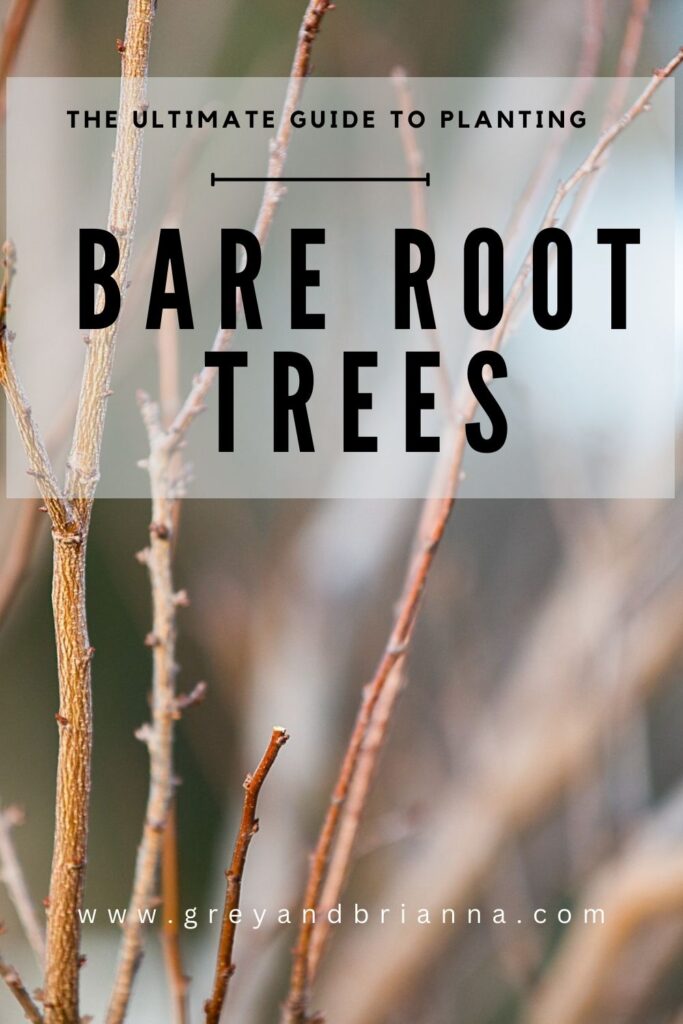
These trees, which are sold without soil around their roots, typically during their dormant season, can establish more quickly and efficiently in their new environment when compared to their containerized or balled-and-burlapped counterparts. It is vital to understand the correct planting techniques to ensure the successful establishment and growth of bare root trees.
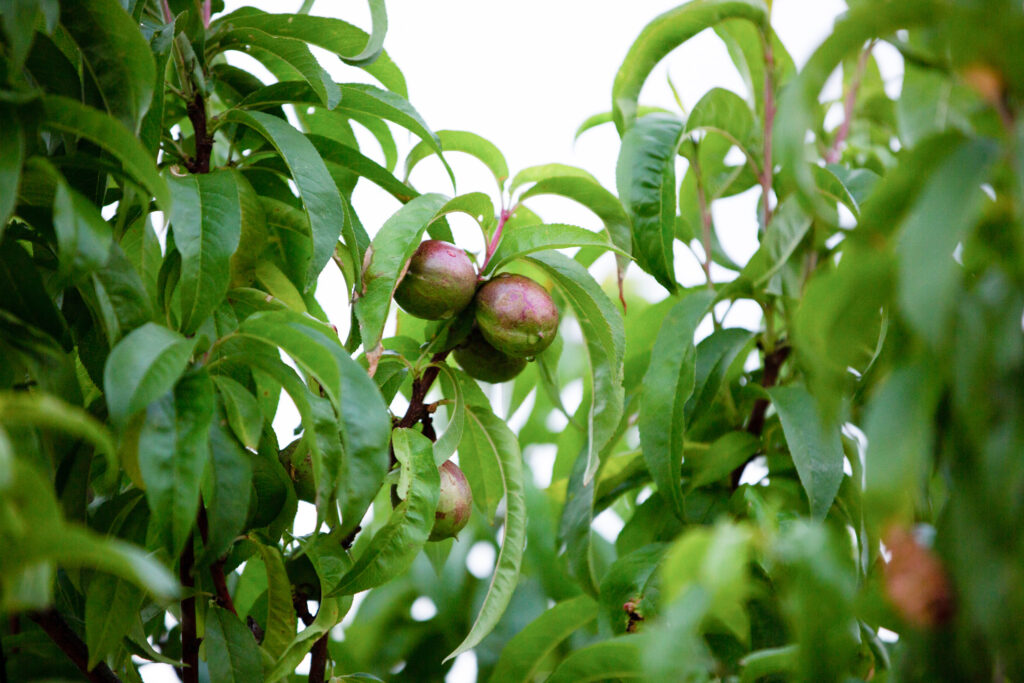
Before planting, a bare root tree must be prepared correctly. This involves hydrating the roots and addressing any damaged or excessively long roots through careful pruning. Selecting an appropriate planting site is also crucial. The site should provide suitable soil conditions, adequate sunlight, and enough space for the tree to grow to its full size. Preparing a planting hole that is both wide and deep enough to accommodate the tree’s root system without bending or crowding is another key step.
Once the tree and site are properly prepared, the actual planting process can begin. This process includes placing the tree at the correct depth in the hole, spreading the roots out naturally, and backfilling with soil while avoiding air pockets that can dry out roots. Staking the tree may be necessary to provide stability during initial growth, particularly in windy areas. Following planting, appropriate watering is essential to help the tree overcome transplant shock and settle into its new environment.
Understanding Bare Root Trees
Bare root trees provide an eco-friendly option for gardeners and landscapers. They are sold with no soil around the roots, making them distinct from potted or balled-and-burlapped trees.

Defining Bare Root Trees
Bare root trees are trees that are harvested and sold without any soil surrounding their roots. Typically, these trees are dug up while dormant and stored in carefully controlled conditions before being shipped to customers. This type of tree is known for its reduced weight and ease of handling.
Advantages of Bare-Root Trees
The primary benefits of bare-root trees include:
- Cost effectiveness: They are often less expensive than their containerized counterparts because they are cheaper to ship and produce.
- Larger selection: Nurseries can offer a wider variety owing to the ease of storing and shipping these lightweight trees.
- Healthier root systems: The roots of bare-root trees haven’t been restricted by containers, which can lead to better immediate growth after planting.
- Environmentally friendly: There’s reduced use of plastic containers and potting materials, making them an eco-conscious choice.
Selection of Species
When selecting species for bare-root planting, one should consider:
- Climate and zone appropriateness: Choose species that are well-suited to the local environment.
- Purpose of planting: Whether the tree is for fruit production, shade, or ornamental purposes can dictate the species selection.
- Rootstock: For some species, the rootstock can be as important as the species itself, affecting the tree’s growth, yield, and disease resistance.
Pre-Planting Considerations
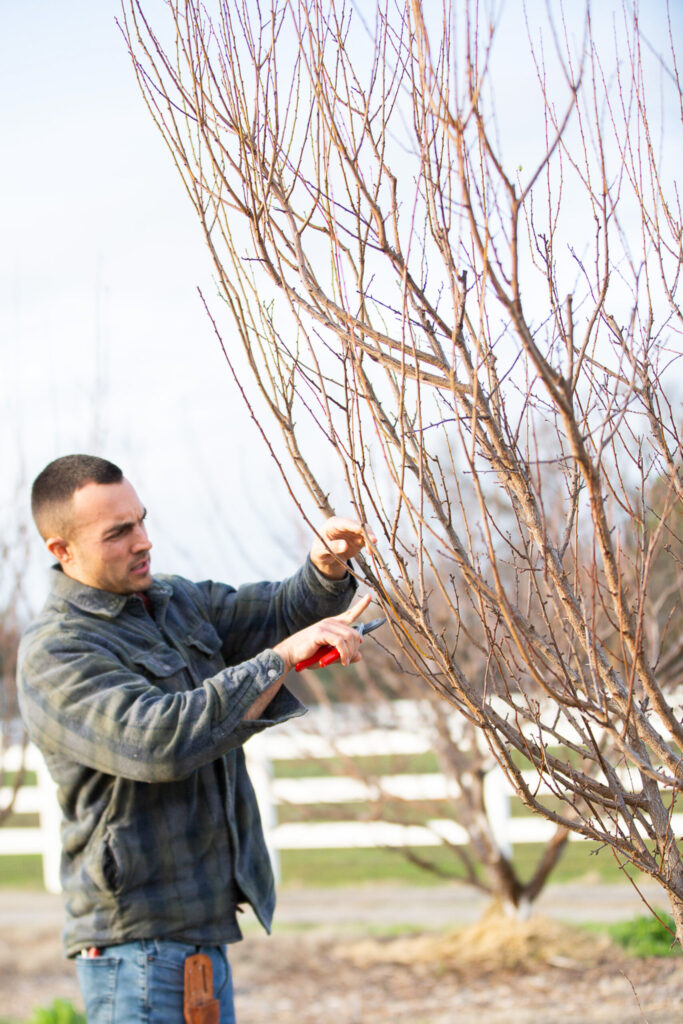
Before planting bare root trees, the gardener must evaluate several important factors to ensure successful growth and development. Selecting the appropriate location, assessing soil conditions, and considering the local climate and weather patterns are critical steps in the pre-planting process.
Selecting the Right Location
Choosing the proper planting location impacts the tree’s ability to thrive. The selected site should receive adequate sunlight, typically six to eight hours of direct sun per day, and allow enough space for the tree to grow to its full size. One must consider the tree’s proximity to buildings, power lines, and other structures to avoid future complications.
Evaluating Soil Conditions
Soil health is paramount for the prosperity of bare root trees. The gardener should examine the soil’s texture, nutrients, and pH level. It is imperative to ensure good drainage to prevent waterlogging, which can be detrimental to the tree’s roots. Incorporating organic matter can improve soil structure and fertility, enhancing the tree’s ability to absorb nutrients and water.
- Soil Texture: Loam is ideal; sandy or clay soils might need amendments.
- Drainage: Perform a percolation test to assess water drainage speed.
- pH Level: Most trees prefer a pH of 6.0 to 7.0.
Considering Climate and Weather
Understanding the local climate is vital for the timing and success of planting bare root trees. Trees are generally best planted during their dormancy, typically in spring or fall, to minimize stress and improve root establishment. The gardener should also account for the frequency and intensity of local weather events, such as droughts or frost, to select species with appropriate resilience.
- Climate Zones: Match tree species to your USDA Hardiness Zone.
- Weather Patterns: Take note of seasonal weather trends affecting planting and growth cycles.
Through thorough consideration of these factors, one can create a more conducive environment for bare root trees to establish and mature.
Preparation for Planting
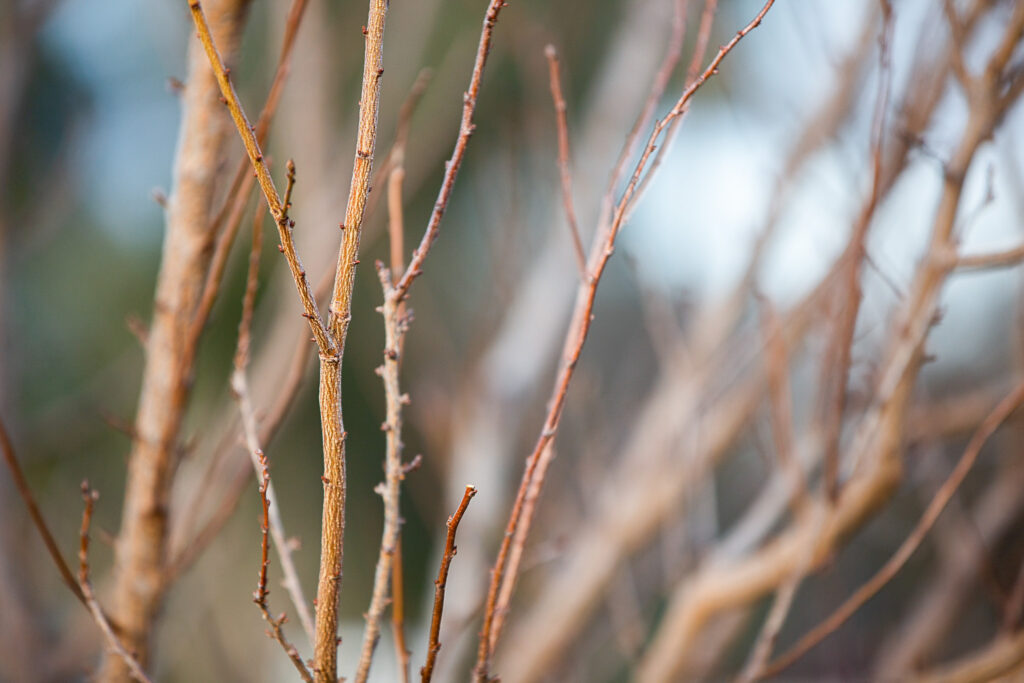
Before planting bare root trees, one must ensure proper timing, root preparation, and site conditions. These foundational steps affect the success and health of newly planted trees.
When to Plant Bare Root Trees
Bare root trees should be planted during their dormancy, which typically falls between late fall and early spring. This period varies based on local climate and tree species. Planting during dormancy allows trees to establish roots before the stress of warmer weather and active growth.
Ideal Planting Time:
- Late Fall (after leaf drop)
- Winter (if the ground isn’t frozen)
- Early Spring (before bud break)
Soaking the Roots
Before planting, the trees’ roots should be soaked in water to ensure hydration. It is recommended to soak the roots for 3 to 6 hours, but not more than 24 hours, to avoid the potential for root damage.
Root Soaking Guidelines:
- Duration: 3-6 hours
- Maximum: 24 hours
- Water: Clean and room temperature
Preparing the Planting Site
Selecting and preparing the right planting site is crucial for bare root planting success. A site with well-draining soil, adequate sunlight, and space for growth is imperative.
- Sunlight: Choose a site with full sun exposure or partial shade, depending on the species.
- Soil: Test for drainage and pH level compatibility.
- Digging: Dig a hole that is wide and deep enough to accommodate the tree’s roots without bending or crowding them. The width of the hole should be at least twice the spread of the roots.
- Positioning: Place the tree at the proper depth to ensure the root collar sits slightly above ground level after settling.
Planting Process

The successful establishment of a bare root tree hinges on proper planting technique, which involves digging an appropriate hole, careful placement of the tree, and correct backfilling and watering.
Digging the Planting Hole
Width and Depth: The hole should be twice as wide as the root spread and equal in depth to the tree’s root length. This ensures roots have enough space to expand without bending or circling.
Shape: The sides of the hole should be sloped and not straight, to encourage roots to grow outward. The bottom should be firm to prevent the tree from settling too deep after planting.
Placing the Tree
Orientation: The tree should be placed in the center of the hole, with the roots spread evenly. The point where the roots meet the trunk, known as the root collar, must sit slightly above the surrounding soil level to prevent water accumulation around the base.
Straightness: It is vital to ensure the tree is straight from all angles before backfilling begins.
Backfilling and Watering
Soil Replacement: Begin to backfill with soil that was originally removed, firming gently to eliminate air pockets, which can dry out roots and compromise tree stability.
Watering: Once half of the hole is filled, water generously to settle the soil, then finish backfilling. A thorough initial watering is critical to further eliminate air gaps and provide adequate moisture for the roots.
Aftercare and Maintenance
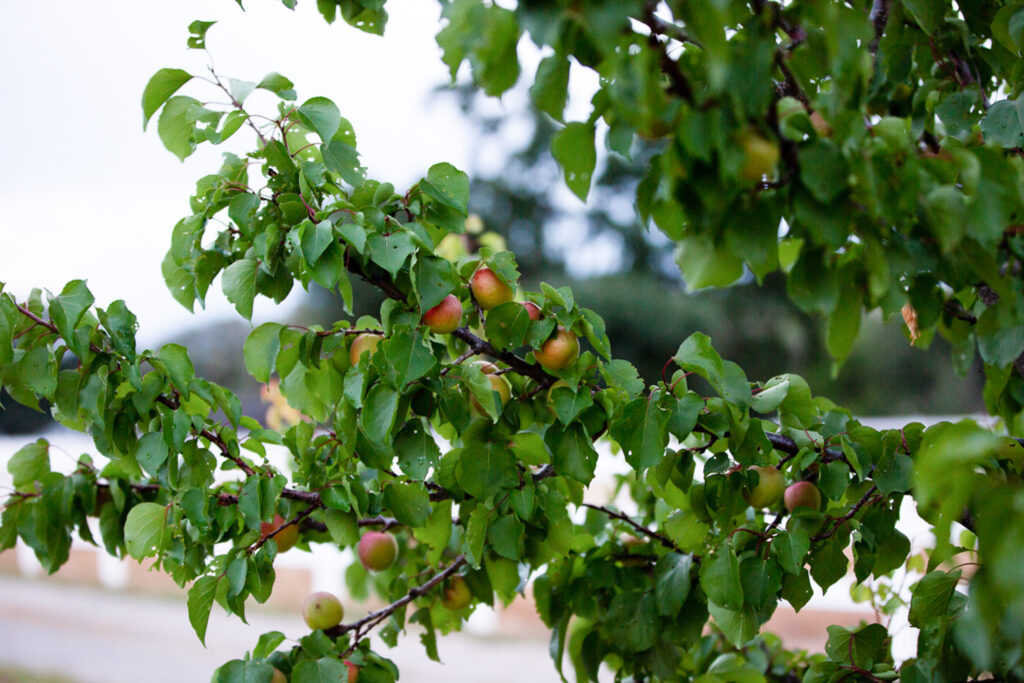
Proper aftercare is essential for the establishment and longevity of bare root trees. They require consistent attention to ensure they become well-anchored, healthy, and aesthetically pleasing in the landscape.
Staking and Supporting the Tree
Upon planting, staking is often necessary to stabilize bare root trees until their root systems take hold and can support the tree independently. Use a stake that is about two-thirds the height of the tree and place it on the windward side. Secure the tree to the stake with tree ties, ensuring not to over-tighten, to allow some movement which encourages stronger root growth.
Mulching and Watering
Mulching is critical for maintaining soil moisture and temperature. Apply a 2 to 4-inch layer of organic mulch, such as wood chips or straw, around the base of the tree but not in direct contact with the trunk to prevent rot. For watering, ensure deep irrigation that encourages downward root growth but avoid overwatering. The soil should be moist, not waterlogged. In the first growing season, especially in dry conditions, trees may need weekly watering.
- Watering Guidelines:
- First month: Water every other day unless it rains.
- Second month: Water twice a week.
- Thereafter: Weekly watering if there is no significant rainfall.
Monitoring Growth and Health
Regular checks are important to assess the health and growth of the tree. Look for signs of stress such as wilting leaves or discoloration, which can indicate pest problems or diseases. Prune any broken or damaged branches, and during winter, check stakes and ties to ensure they are still effective but not too tight as the tree grows.
Addressing Potential Challenges
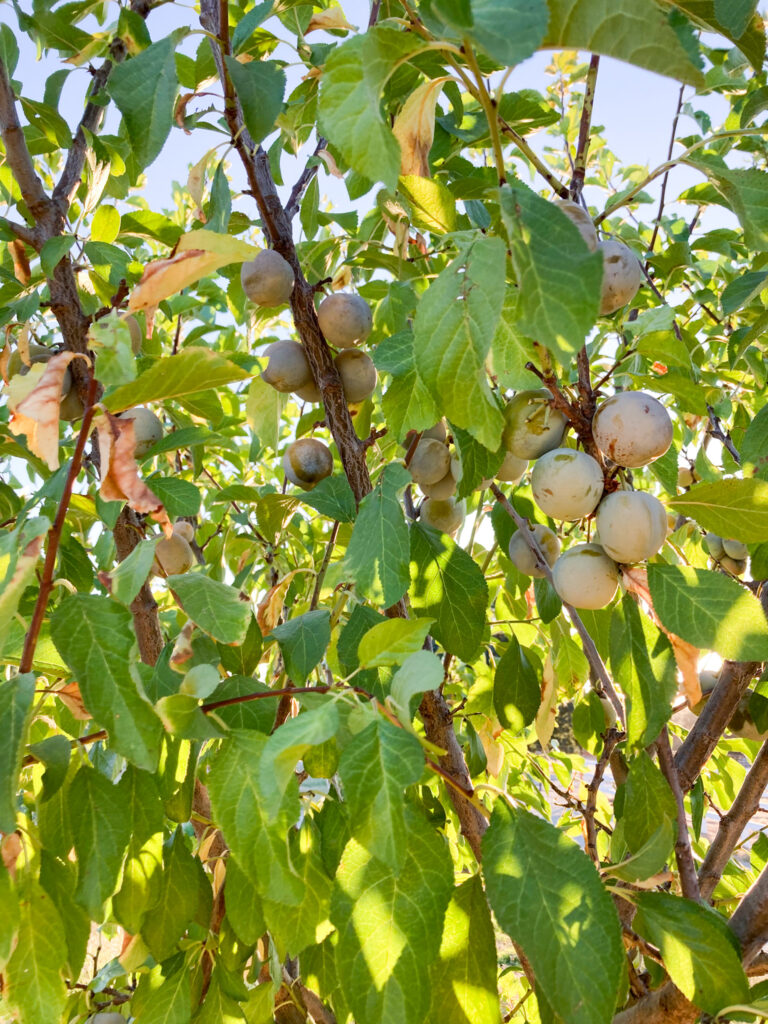
When planting bare root trees, gardeners frequently encounter issues related to transplant shock, pests, diseases, and environmental stress. Anticipating and managing these challenges is key to the successful establishment and growth of the trees.
Dealing with Transplant Shock
Transplant shock is a common phenomenon that occurs when bare root trees struggle to adapt to their new environment. Immediate care after planting is critical to minimize stress. Gardeners should:
- Water thoroughly: Soak the root zone immediately after planting to hydrate the roots and help settle the soil.
- Mulch: Apply a 2-3 inch layer of organic mulch around the base of the tree to conserve moisture and regulate soil temperature.
Protecting from Pests and Disease
Pests and diseases can significantly impair the health of newly planted bare root trees. Protection strategies include:
- Regular inspections: Check for signs of pests or disease frequently to catch issues early.
- Hygienic practices: Remove fallen debris around the tree and sterilize pruning tools to prevent the spread of pathogens.
| Protection Method | Purpose |
|---|---|
| Pesticides | Defense against specific pests |
| Fungicides | Treatment for fungal infections |
Preventing Environmental Stress
Environmental stress factors – such as extreme temperatures, drought, or poor soil conditions – can impede a bare root tree’s growth. To shield them from damage:
- Staking: Support young trees with stakes to prevent wind damage.
- Watering schedule: Implementing a consistent watering routine will ensure the trees do not suffer from drought stress.
To maintain optimal conditions, gardeners should adjust care practices in response to changes in weather and seasons, remaining especially vigilant during the tree’s initial growth period.
Trees Specific Considerations
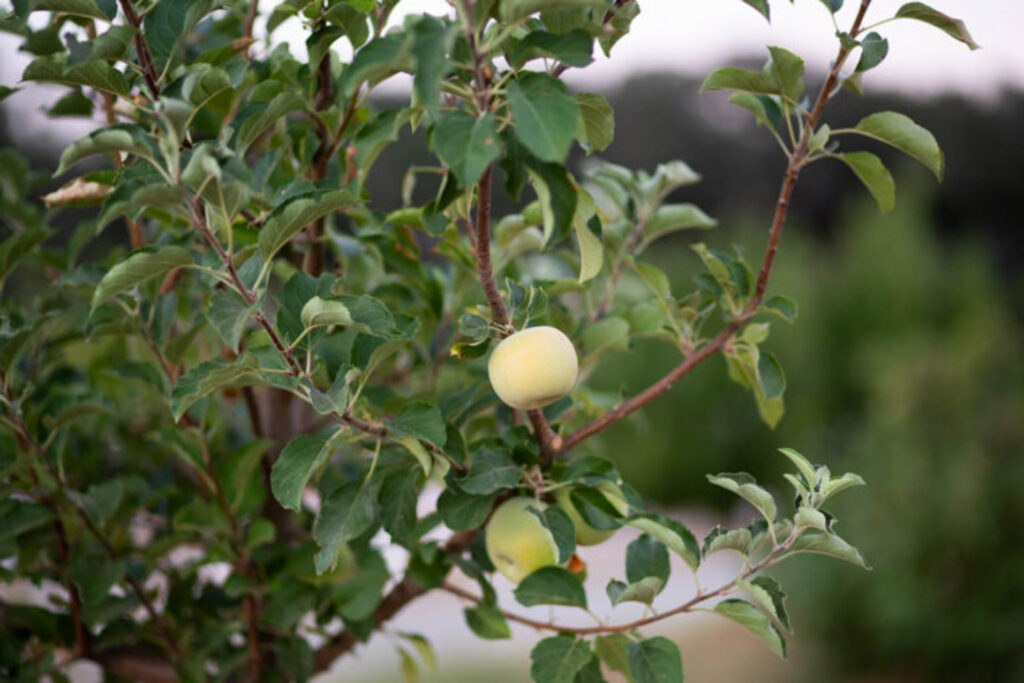
Each type of tree has unique considerations that influence its successful establishment and growth. It is imperative for planters to acknowledge differences in root systems and specific needs such as soil type and sunlight exposure.
Planting Fruit Trees
When planting fruit trees, including apple trees, specific attention must be placed on the correct depth. The graft union, which should be visible above the soil line, is particularly critical for these species. Apple trees, as representative of fruit trees, prefer well-drained soil and full sunlight.
- Graft Union: Ensure it is 2-4 inches above the soil to prevent rot.
- Root System: Spread the roots evenly and avoid bending.
Planting Oak Trees
Oak trees, known for their sturdy and extensive root systems, require ample space for their broad-spreading roots. They must be planted in areas that will accommodate their growth and should not be planted too deeply which can cause issues with oxygen availability to the roots.
- Spacing: Oaks need more space between trees compared to fruit trees.
- Soil Depth: The planting hole should accommodate the full extent of the root system without bending or crowding the roots.
Special Requirements for Different Tree Types
Different trees have varying specific requirements. For instance, walnut trees need deep, fertile soil and extra spacing due to their large roots and the allelopathic compounds they release which can inhibit the growth of nearby plants.
- Walnuts: Avoid planting near other vegetation that can be affected by juglone, a substance produced by walnuts.
- Tree Specific Needs: Each species may require different soil pH levels, sun exposure, and watering schedules.
Long-Term Care and Management
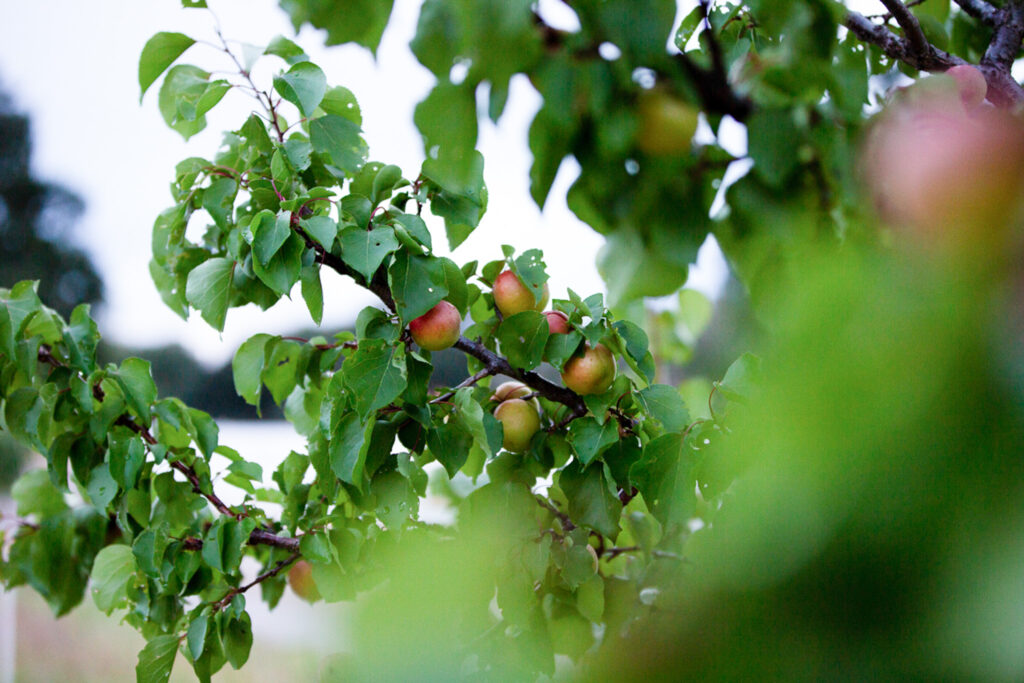
Effective long-term care enhances a tree’s health and productivity. It involves consistent attention to the tree’s needs through scheduled maintenance, carefully considered pruning, and informed soil management.
Annual Maintenance
Annual maintenance is pivotal for the well-being of bare root trees. They require regular monitoring for signs of pest infestation or disease, necessitating timely intervention. For example, homeowners could have a routine:
- Spring: Inspect tree structure and bud condition.
- Summer: Check for adequate water supply and signs of stress.
- Fall: Prepare trees for winter with mulch and proper hydration.
- Winter: Evaluate the tree’s dormancy status and overall health.
Pruning for Health and Productivity
Pruning is a crucial component of a tree’s vigor and fruit output. One should prune during dormancy to remove dead or diseased branches and to shape the tree for optimal growth.
READ: The Ultimate Guide to Pruning Fruit Trees
- Young Trees: Focus on establishing a strong structure.
- Mature Trees: Aim to maintain shape and manage size. Pruning also improves air circulation and sunlight penetration, which are essential for reducing disease risk and enhancing fruit quality.
Soil Management and Fertilization
Soil health directly affects tree development. It requires:
- Periodic testing: Check pH levels and nutrient content.
- Amendments: Apply organic matter to improve texture and fertility.
- Fertilization: Use balanced fertilizers, considering the developmental stage of the tree.
Mycorrhizal fungi should be introduced to foster a symbiotic relationship that aids in nutrient and water uptake. Gardeners must be prudent with the type and amount of fertilizer used, as excessive fertilization can be harmful.
READ: What is Compost Tea? Plus, and How to Make it.
Additional Tips and Tricks
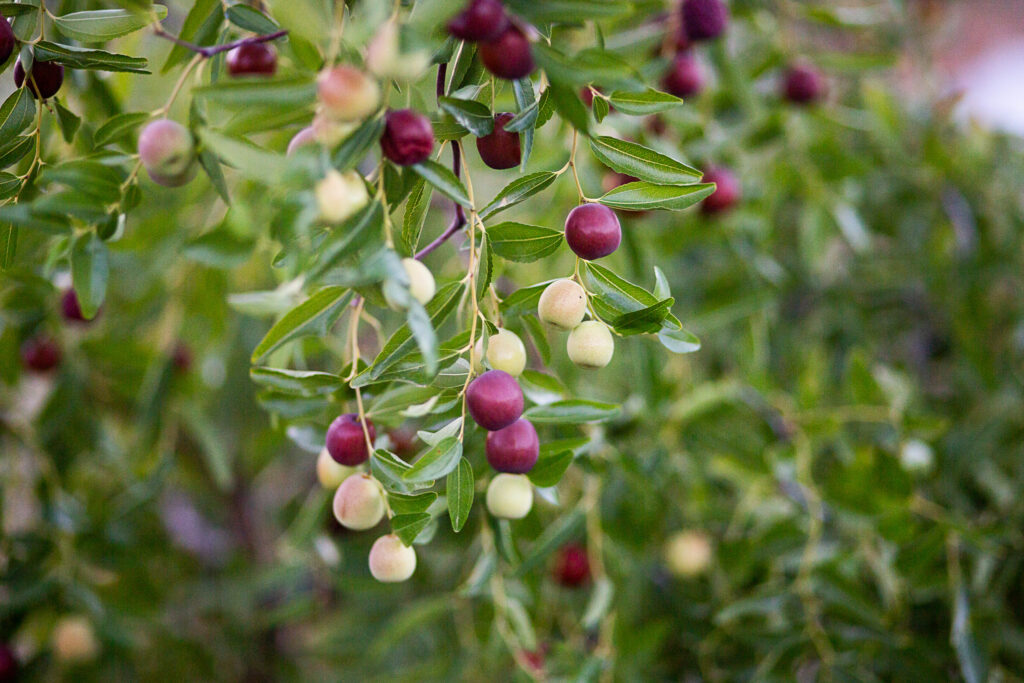
In enhancing tree growth and survival, key practices such as employing mycorrhizal fungi, constructing a protective berm, and ensuring proper exposure to sunlight and air circulation can be immensely beneficial.
Utilizing Mycorrhizal Fungi
Mycorrhizal fungi play a pivotal role in a tree’s ability to absorb nutrients and water, leading to a more robust root system. Application tips:
- Choose a mycorrhizal product that is specific to your tree species.
- Apply the fungi directly to the roots during planting.
Creating a Protective Berm
A berm is a mound or wall of earth that acts as a barrier. It helps in water retention and root establishment. Construction guidelines:
- Construct a berm with a height of 2-4 inches around the drip line of the tree.
- Ensure that it is not pressing against the trunk to prevent rot.
Ensuring Proper Sunlight and Air Circulation
Proper sunlight and air circulation are essential for photosynthesis and transpiration, reducing the risk of disease. Positioning tips:
- Plant the tree in an area that receives adequate daily sunlight, generally 6-8 hours.
- Provide enough space between trees to ensure air can freely circulate, fostering a healthy growing environment.
Bare Root Trees Frequently Asked Questions (FAQ)
This section addresses some of the most common queries regarding the planting and care of bare root trees, providing clear and concise answers to assist gardeners in their tree-planting endeavors.
What are the steps involved in planting a bare root tree?
Bare root trees require proper planting to thrive. The process involves digging an appropriate hole, spreading the roots, and ensuring the root crown sits at ground level before backfilling with soil and watering.
Is it necessary to soak bare root trees before planting, and for how long?
It is advisable to soak bare root trees for 3-8 hours before planting to hydrate the roots, which aids in recovery from transplanting and encourages growth.
What is the best season to plant bare root trees and can they be planted in winter?
The ideal time for planting bare root trees is during their dormancy, typically from late fall to early spring. Winter planting is possible in areas where the ground does not freeze.
Can bare root trees be planted in containers, and if so, what are the guidelines?
Bare root trees can be planted in containers if space restricts ground planting. Select a large enough container to accommodate root growth, use well-draining soil, and ensure proper watering.
How long does it take for bare root trees to become fully established after planting?
Bare root trees usually take about 2-3 years to establish firmly. Proper care during the initial years is crucial for the development of a healthy root system.
Are there any specific fertilization requirements for bare root trees after planting?
Fertilization should be minimal after planting bare root trees. A low dose of balanced fertilizer can be applied after the first year of growth to encourage robustness without causing damage to the tender roots.
Related Articles:
The Ultimate Guide for Pruning Fruit Trees
Winter Homestead Mom Routine | DITL 2
How to Build a Homestead From Scratch
Pin it for Later!


Leave a Reply